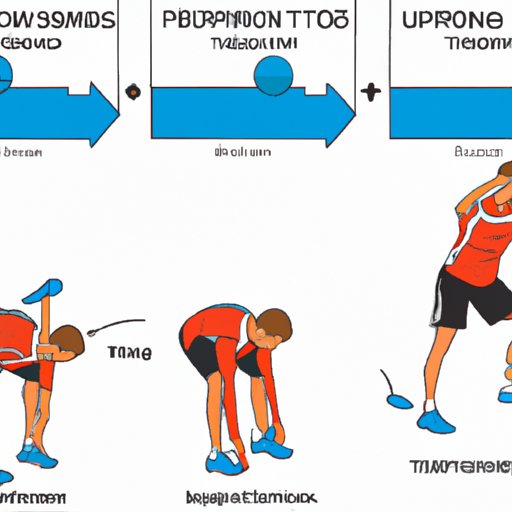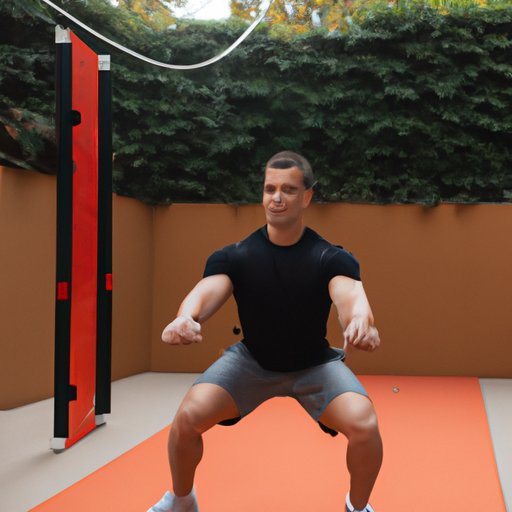Introduction
When it comes to strength training, isotonic exercise is one of the most popular forms of exercise. Isotonic exercise involves using the same amount of resistance throughout the entire range of motion. This type of exercise can help you build strength, improve balance, and increase your overall fitness level. In this article, we’ll explore what isotonic exercise is, how it can benefit your fitness goals, and tips for doing it safely.
What Is Isotonic Exercise?
Isotonic exercise is a type of strength training that involves contracting muscles against a constant external resistance. This means that the same amount of resistance is used throughout the entire range of motion. Examples of isotonic exercises include weightlifting, push-ups, pull-ups, squats, and lunges. As opposed to isometric exercise, which involves holding a muscle contraction without any movement, isotonic exercises involve dynamic movements.
Benefits of Isotonic Exercises
Isotonic exercises can provide a number of benefits for your physical health. According to a study published in the journal Applied Physiology, Nutrition, and Metabolism, isotonic exercises can improve muscular strength, endurance, and power. Additionally, these exercises can help improve balance, coordination, and joint stability, as well as reduce the risk of injury. Furthermore, isotonic exercises can be beneficial for mental health, as they can help reduce stress and improve mood.

Isotonic Exercises for Strength Training
There are a variety of isotonic exercises that you can incorporate into your strength training routine. These exercises can be done with weights, such as dumbbells or barbells, or with bodyweight exercises like push-ups and pull-ups. Some examples of isotonic exercises include bicep curls, tricep extensions, shoulder presses, chest presses, squats, and lunges.
How to Incorporate Isotonic Exercises into Your Workout Routine
When incorporating isotonic exercises into your workout routine, it’s important to focus on proper form and technique. Start by choosing a weight or intensity level that is appropriate for your fitness level. Begin with a low-intensity exercise and gradually increase the intensity as you become more comfortable with the movements. Aim to do at least 2 sets of 10-15 repetitions of each exercise.

Tips for Doing Isotonic Exercises Safely
In order to get the most out of your isotonic exercises and avoid injury, there are a few things you should keep in mind:
- Warm Up Before Exercising: Before you start any type of exercise, it’s important to warm up your body. Warming up helps to prepare your muscles for the upcoming workout and can help reduce the risk of injury.
- Use Proper Form: When performing isotonic exercises, it’s important to use proper form and technique. This will ensure that you are getting the most out of your workout and avoiding injury.
- Increase Intensity Gradually: When first starting out, it’s best to start with a low-intensity exercise and gradually increase the intensity as you become more comfortable with the movements. This will help to prevent injury and ensure that you are getting the most out of your workout.
- Listen to Your Body: It’s important to listen to your body when exercising. If you start to feel any pain or discomfort, stop the exercise and rest. If the pain persists, consult a doctor.
Conclusion
Isotonic exercise is an effective way to build strength, improve balance, and increase your overall fitness level. By incorporating isotonic exercises into your workout routine, you can reap the benefits of this type of exercise and reach your fitness goals. However, it’s important to make sure you are doing them safely, by warming up before exercising, using proper form, increasing intensity gradually, and listening to your body. With the right approach, isotonic exercises can be a great addition to your workout routine.
(Note: Is this article not meeting your expectations? Do you have knowledge or insights to share? Unlock new opportunities and expand your reach by joining our authors team. Click Registration to join us and share your expertise with our readers.)
